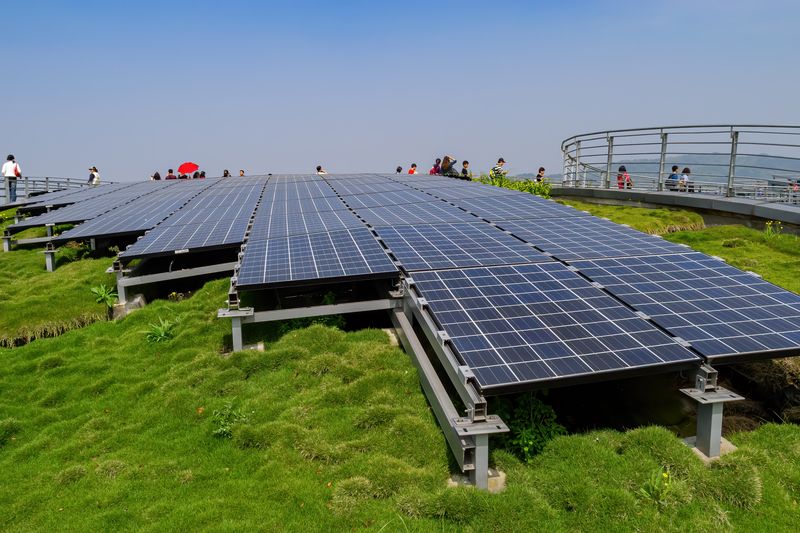Taiwan's HD Renewable eyes growth offshore

Taiwan’s HD Renewable Energy is in talks with banks for debt financings to meet nearly A$3bn (US$1.95bn) in estimated costs for renewable energy and battery storage projects in Australia.
HDRE’s talks centre around six renewable projects, which will add 400MW of solar power and 2GW of energy storage capacity across eastern Australia. The company is also eyeing separate project financings for battery energy storage system contracts it won in Japan and has become a joint venture partner for a 1GW solar energy project in the Philippines.
The overseas operations will start contributing to the company’s bottom line in 2026, according to Jeffrey Chen, chairman of HDRE Australia and Japan.
“Apart from project financing, we will also consider other financing such as senior loans or convertible bonds, as apart from our Australian projects we are also looking at financing for those in Japan, the Philippines and Taiwan,” said Chen.
The company also plans to spin off and list its electricity retailing and battery energy storage system subsidiary, Star Trade, on the Taiwan Stock Exchange in 2027. Star Trade’s power trading and energy aggregation services will likely be exported to HDRE’s overseas markets including Australia, Japan and the Philippines.
HDRE’s Australian assets will come under one roof in ZEBRE, a green energy asset management firm it set up in partnership with local energy retailer Zen Energy. HDRE owns 70% of ZEBRE and Zen Energy the remainder. HDRE also has a 9.7% stake in Zen Energy, which it acquired in late 2024 for A$43m.
The first asset to become part of ZEBRE is a 111MW battery energy storage system project called Templers, the second largest in South Australia. Others, north of Adelaide – the Solar River 256MW BESS and 210MW solar farm – will be included soon, with four others to follow. They are the 105MW Wagga North BESS in New South Wales, 210MW North Yarragon BESS in Victoria and the Hookey Creek 200MW BESS and 100MW solar farm and 180MW Noblevale BESS in Queensland.
The estimated costs for Templers and Solar River are around A$740m combined. Using that as a guide, the other four projects would cost A$2.59bn–$2.96bn. Using a 70:30 debt-to-equity funding mix, HDRE would need around A$2bn of debt financing for those projects.
Chen declined to provide details on ZEBRE’s financing plans.
In Japan, HDRE won five BESS project tenders across Aomori, Fukushima and Hokkaido prefectures in the country’s long-term decarbonisation power source auction in May that will allow it to build 300MW of storage capacity.
The company was already sounding the market for project financing for two earlier BESS projects won in Mie and Fukuoka prefectures in 2024. With 73MW total capacity, the projects are scheduled to start operations in 2027.
“Our mix of loan, bond and equity financing for each market will depend on the interest rate levels of each market. Ultimately, Japan and Australia are both OECD countries and we think that their country risk is not that high,” said Chen.
Overseas draw
HDRE has been active in solar and aquavoltaic projects since its inception in 2016. It has diversified to become a key player that designs, produces and invests in energy storage systems and electric vehicle charging stations in Taiwan.
This year, for example, one of the energy storage systems planned by Li Tong Management Consulting, in which it has a minority stake, obtained a NT$3.25bn (US$108m) loan via Bank SinoPac as MLAB to fund its construction in Pingtung County, Taiwan.
But a shortage of land resources in Taiwan has compelled HDRE’s two founders, Edward Hsieh and Jason Chou, to look overseas. Chen, former managing director of Macquarie Group Asset Management’s green investment division, was appointed in July 2024 to expedite the firm’s international expansion.
The Taiwanese government aims to boost total electricity generated from renewables to 30% by 2030, up from just 14% at the end of April. Much work is still needed to open the domestic power market, in which state-owned Taipower is the sole electricity supplier and grid operator.
As Taiwan’s largest energy supplier importing half its coal and 40% of liquefied natural gas needs, HDRE is looking to Australia as a key market where it can export its engineering experience and put its capital to use.
“The state of power liberalisation in Australia is the most advanced in Asia Pacific. This means if we generate renewable energy we do not sell to one single utility company, but we need to find an energy retailer as a local partner,” said Chen, referring to Zen Energy.
Australia aims to have 82% of its electricity mix generated from renewables by 2030. Concurrent with that growth, the country will need 22GW of energy storage capacity by 2030, up from 3GW today, according to the Australian Energy Market Operator.
“Today we are turning Australia’s sunshine into green energy. As a next step this green energy can be used as an energy source for generating green hydrogen,” said Chen.
He expects ZEBRE to expand into green hydrogen and green ammonia projects overseas and is optimistic that Taiwan could benefit from importing those new forms of energy. The government has identified green hydrogen as a key ingredient to reach its net-zero goals and aims to have it contribute 9%–12% of its energy mix by 2050.
“We are already seeing some early success in hydrogen being shipped in liquefied form. Once the technology becomes more commercialised the cost of shipment will come down,” said Chen.





